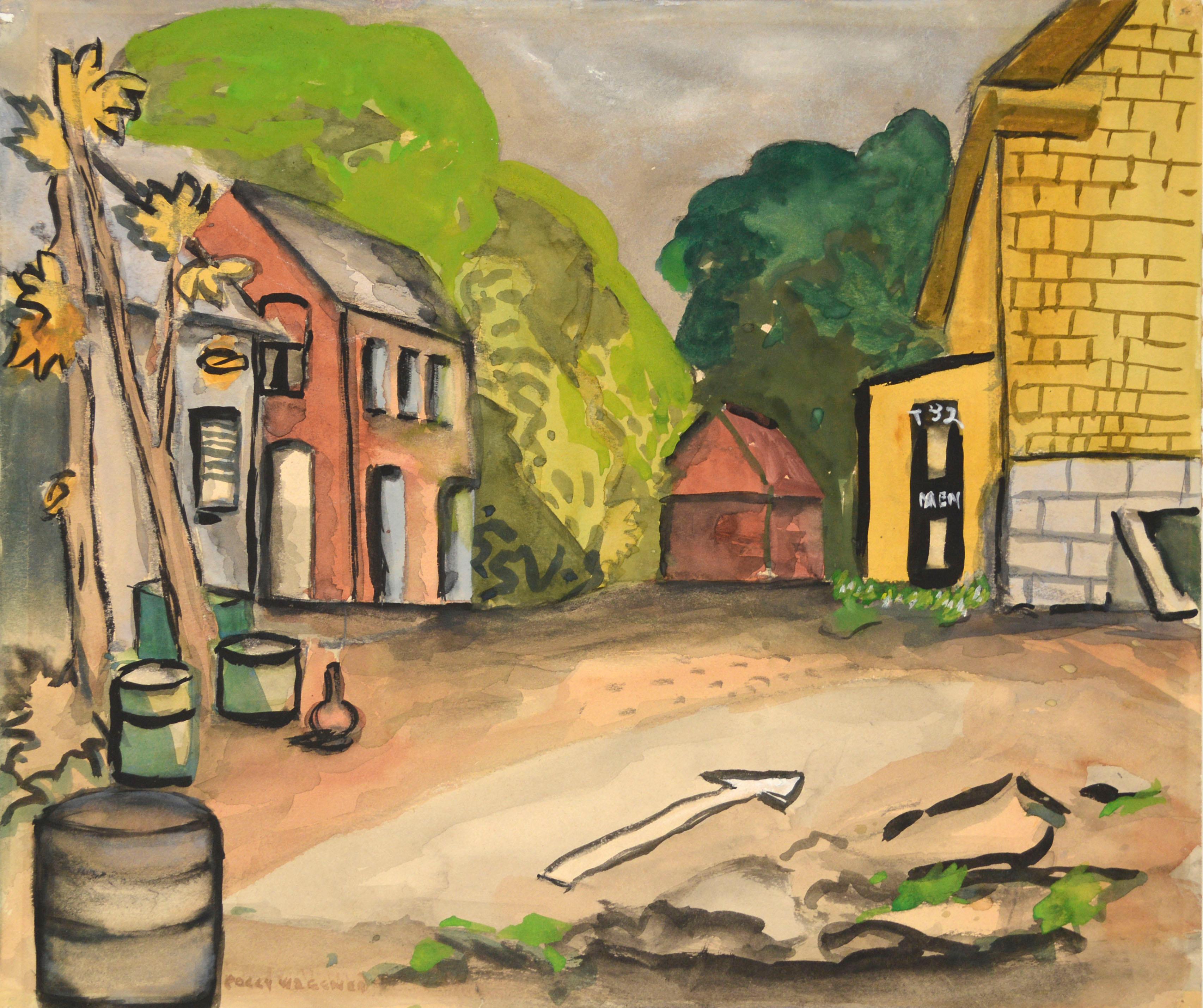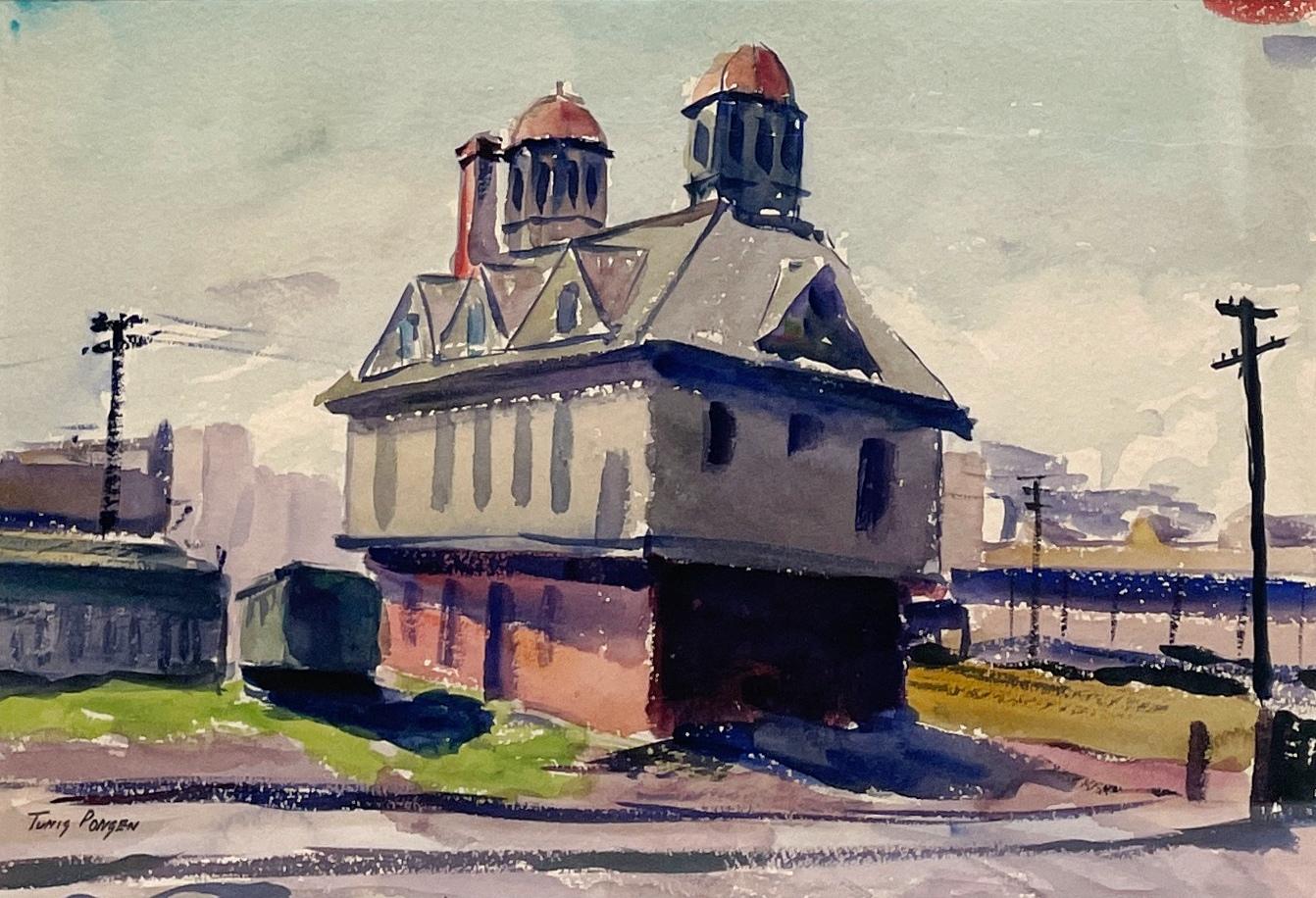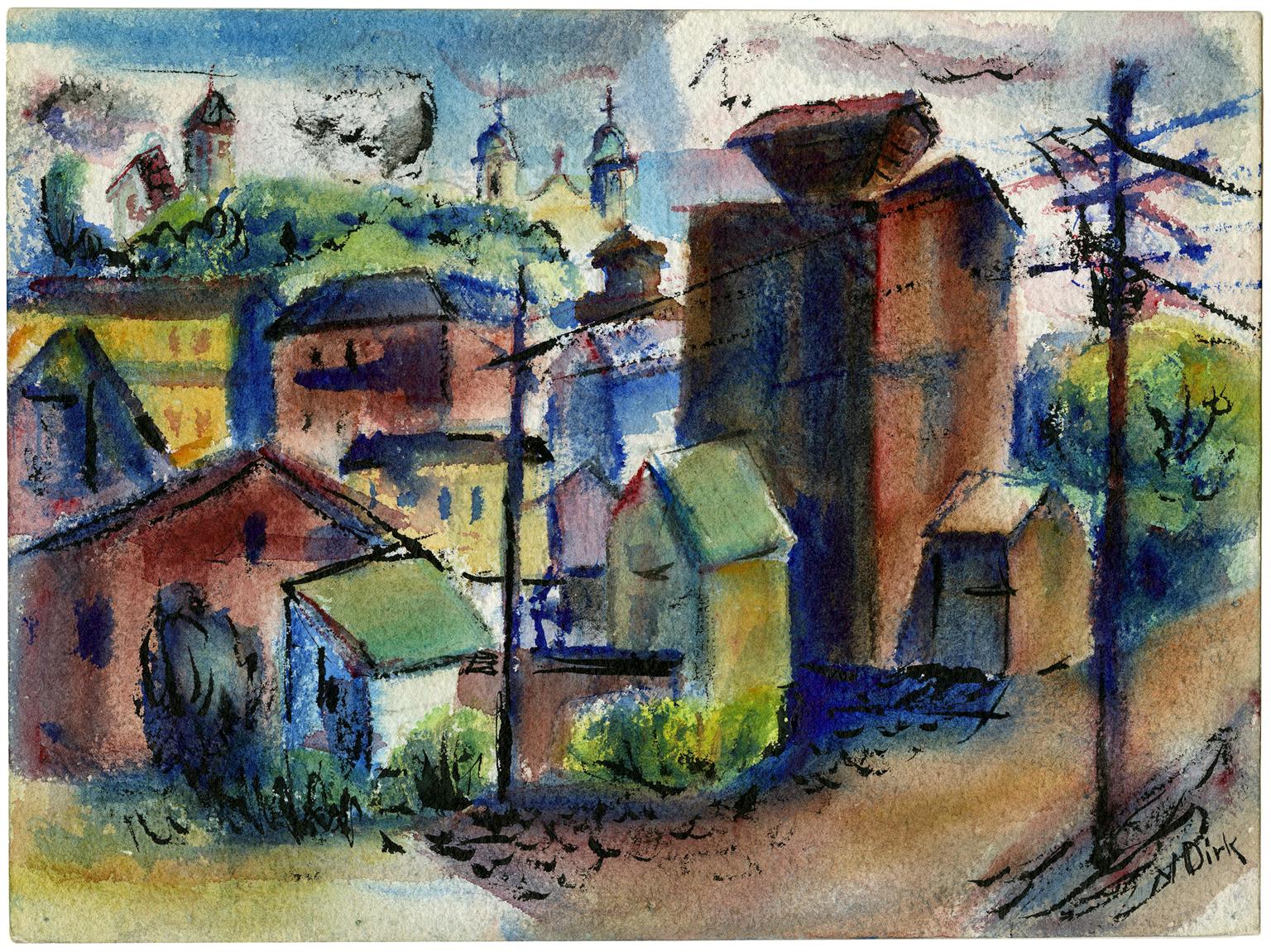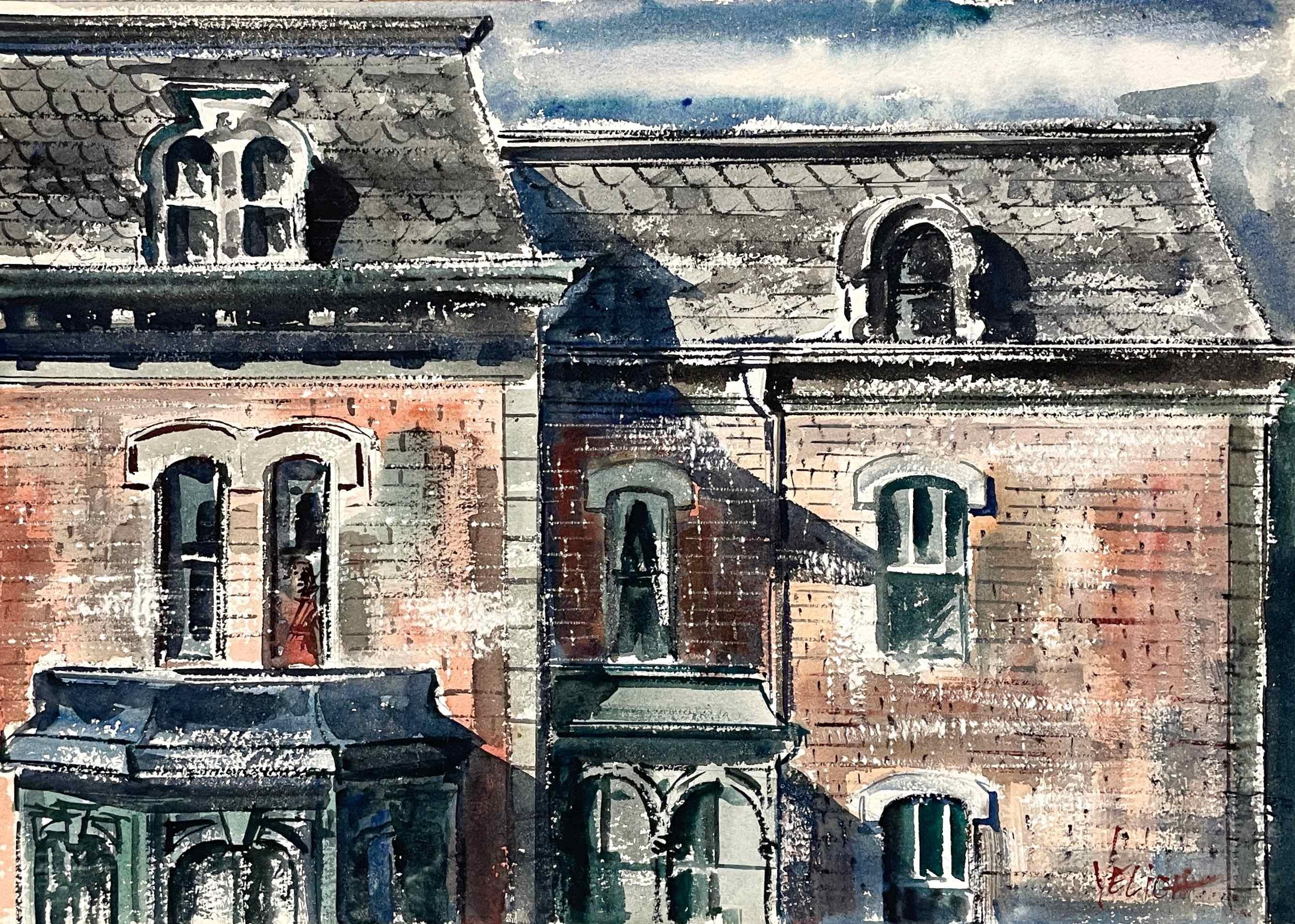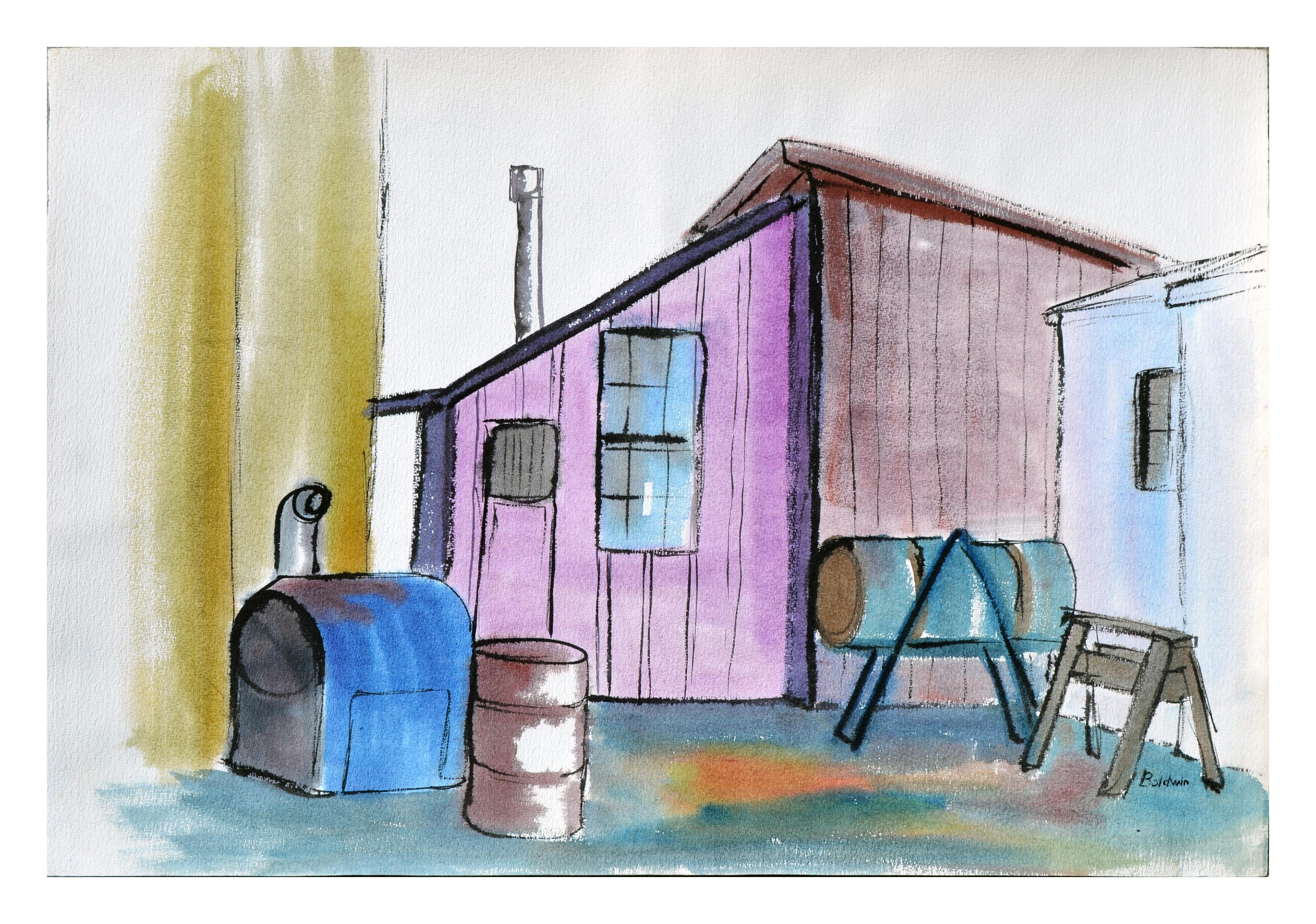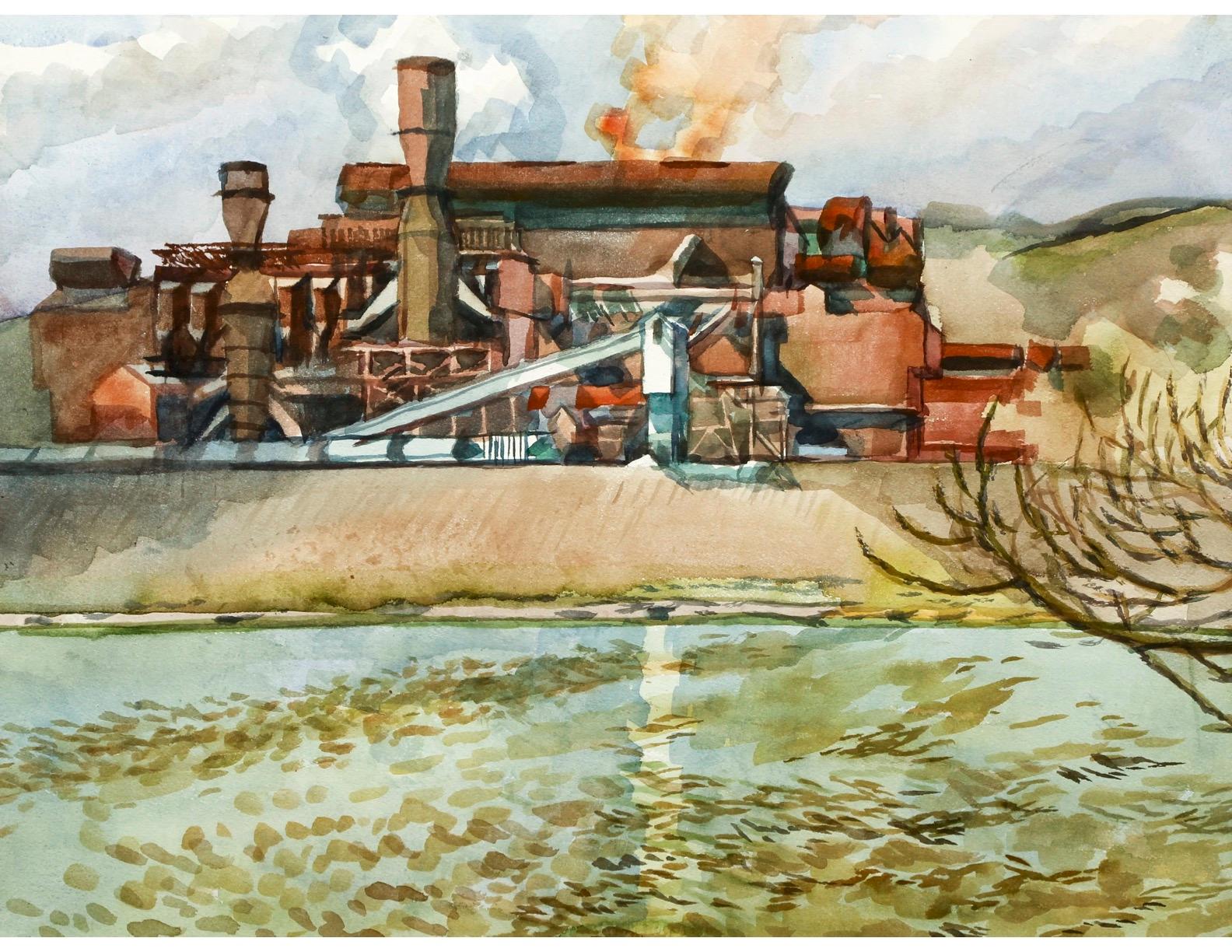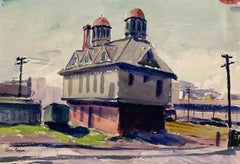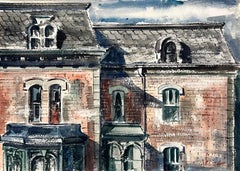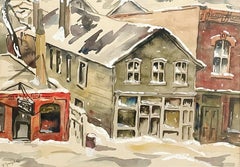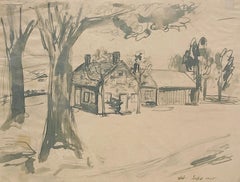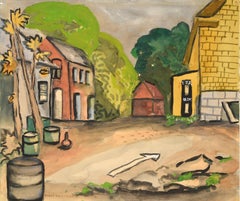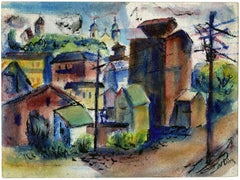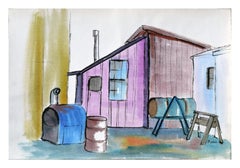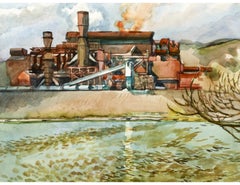Items Similar to Ca. 1950s Watercolor Titled Canadian National RR at Antigonish by Rita Duis
Want more images or videos?
Request additional images or videos from the seller
1 of 9
Rita Duis (Astley-Bell)Ca. 1950s Watercolor Titled Canadian National RR at Antigonish by Rita Duisca. 1950s
ca. 1950s
$485
£370.81
€427.10
CA$679.63
A$758.75
CHF 397.57
MX$9,287.81
NOK 5,049.17
SEK 4,760.73
DKK 3,187.46
Shipping
Retrieving quote...The 1stDibs Promise:
Authenticity Guarantee,
Money-Back Guarantee,
24-Hour Cancellation
About the Item
A curious ca. 1950s watercolor of railroad freight car, titled "Canadian National RR at Antigonish" by artist Rita Duis. Image size: 14 3/4" x 22". Matted size: 20" x 28".
Artist Rita Duis (Astley-Bell) led an incredibly colorful life. She was born into a wealthy New York family in 1905. In 1930, Duis was scandalously sued for $100,000 for breach of promise by her suitor Graham Bell. In 1958, socialite Duis had a very public and bitter divorce from her husband Leonard Astley-Bell, president of Asiatic Petroleum Company, that was splashed across the New York papers. Duis claimed that Leonard Astley-Bell committed bigamy, as he obtained a Mexican divorce from her without her knowledge and then married another woman. Later in life, Duis moved to Chicago when her daughter Wendy married Lincoln Park Zoo Director Dr. Lester Fisher.
Duis exhibited at the Salmagundi Club in New York. She died in Chicago in 1997.
- Creator:Rita Duis (Astley-Bell) (1905 - 1997, American)
- Creation Year:ca. 1950s
- Dimensions:Height: 20 in (50.8 cm)Width: 28 in (71.12 cm)
- More Editions & Sizes:Archivally matted to 20" x 28"Price: $485
- Medium:
- Movement & Style:
- Period:
- Condition:See Photos.
- Gallery Location:Chicago, IL
- Reference Number:Seller: #180191stDibs: LU2591215770782
About the Seller
5.0
Recognized Seller
These prestigious sellers are industry leaders and represent the highest echelon for item quality and design.
Established in 2000
1stDibs seller since 2023
71 sales on 1stDibs
Typical response time: 3 hours
- ShippingRetrieving quote...Shipping from: Chicago, IL
- Return Policy
Authenticity Guarantee
In the unlikely event there’s an issue with an item’s authenticity, contact us within 1 year for a full refund. DetailsMoney-Back Guarantee
If your item is not as described, is damaged in transit, or does not arrive, contact us within 7 days for a full refund. Details24-Hour Cancellation
You have a 24-hour grace period in which to reconsider your purchase, with no questions asked.Vetted Professional Sellers
Our world-class sellers must adhere to strict standards for service and quality, maintaining the integrity of our listings.Price-Match Guarantee
If you find that a seller listed the same item for a lower price elsewhere, we’ll match it.Trusted Global Delivery
Our best-in-class carrier network provides specialized shipping options worldwide, including custom delivery.More From This Seller
View All1930s Watercolor of a Chicago Rail Yard by Notable Chicago Artist Tunis Ponsen
By Tunis Ponsen
Located in Chicago, IL
A 1930s Watercolor titled "Chicago Rail Yard" by important Chicago/Michigan artist Tunis Ponsen. Image size: 10 1/2" x 15 1/2". Framed size: 18" x 23 1/2". This watercolor comes...
Category
1930s American Modern Landscape Drawings and Watercolors
Materials
Paper, Watercolor
Captivating Mid-Century Watercolor of an Old Chicago House by George Yelich
Located in Chicago, IL
A captivating Mid-Century watercolor of an old Chicago house (with a female figure standing in the window) by Chicago artist George Yelich. The watercolor bears its original frame. ...
Category
1950s American Modern Landscape Drawings and Watercolors
Materials
Paper, Ink, Watercolor
A 1940s American Scene Watercolor of a Chicago Street Scene by Grace Spongberg
Located in Chicago, IL
A 1940s American Scene watercolor depicting a snowy Chicago Street Scene by artist Grace Spongberg. Image size: 12 1/2" x 17". Framed size: 18 1/2" x 22 1/2". This painting come...
Category
1940s American Modern Landscape Drawings and Watercolors
Materials
Paper, Watercolor
A Picturesque 1945 Landscape Watercolor of Calais, Vermont, The Artist's Studio
By Harold Haydon
Located in Chicago, IL
A Charming, Picturesque 1945 Landscape Watercolor of Calais, Vermont, The Artist's Studio, by noted Chicago Artist, Harold Haydon (Am. 1909-1994). For many years, Haydon and his wif...
Category
Mid-20th Century American Modern Landscape Drawings and Watercolors
Materials
Paper, Watercolor, Pencil
1950s Cubist Watercolor "Dry Dock, Burrard Shipyard, Vancouver" by Rita Duis
Located in Chicago, IL
A Cubist watercolor on paper, titled "Dry Dock, Burrard Shipyard, Vancouver" by Chicago and New York artist Rita Duis (Astley-Bell). Image size: 14 3/4" x 22". Archivally matted t...
Category
1950s American Modern Landscape Drawings and Watercolors
Materials
Watercolor, Paper
Delightful ca. 1950s Cubist Harbor Scene by Artist Rita Duis (Astley-Bell)
Located in Chicago, IL
A ca. 1950s Cubist watercolor of a brightly-colored dock scene by Chicago and New York artist Rita Duis (Astley-Bell). Archivally matted to 14" x 18".
Artist Rita Duis (Astley-Bell...
Category
1950s American Modern Landscape Drawings and Watercolors
Materials
Watercolor, Paper
You May Also Like
Mid Century Oakland Industrial Landscape Watercolor
Located in Soquel, CA
Mid-century Bay Area urban landscape watercolor of an industrial neighborhood in Oakland by California artist Polly Hughett Wagener (American, 1908–1992). This industrial scene of a ...
Category
1960s Modern Landscape Drawings and Watercolors
Materials
Paper, Watercolor
'Gloucester' — Mid-Century Modernist Watercolor
By Nathaniel Dirk
Located in Myrtle Beach, SC
Nathaniel Dirk, Untitled (Gloucester), watercolor, with fresh colors, on watercolor paper; in fine, original condition, with the artist's tack holes (barely visible) at the sheet edg...
Category
Mid-20th Century Modern Landscape Drawings and Watercolors
Materials
Watercolor
Vintage Watercolor Landscape -- The Workshop
By Diane Baldwin
Located in Soquel, CA
A colorful vintage industrial outdoor scene in watercolor by artist Diane Baldwin (American, 20th century). Signed "Baldwin" lower right. Unframed. Image...
Category
1970s American Impressionist Landscape Drawings and Watercolors
Materials
Paper, Watercolor
$300 Sale Price
20% Off
Industrial Landscape Contemporary American Watercolor Magic Realism 20th Century
By Henry Koerner
Located in New York, NY
Industrial Landscape Contemporary American Watercolor Magic Realism 20th Century
Henry Koerner (1915-1991)
J&L Oxygen Plant
18 x 24 1/2 inches
Watercolo...
Category
1980s American Realist Landscape Drawings and Watercolors
Materials
Paper, Watercolor
Countryside - Original Watercolor on Paper by Pierre Segogne - 1950s
By Pierre Segogne
Located in Roma, IT
Countryside is an original artwork, realized by Pierre Segogne in the 1950s.
Hand-signed on lower right margin.
Mixed colored watercolor on paper.
This beautiful artwork represe...
Category
1950s Modern Landscape Drawings and Watercolors
Materials
Watercolor
Linda Jenetti, 'St. George St. Garage', Watercolor on Paper, Canada, C. 1975
Located in Chatham, ON
LINDA JENETTI - 'St. George Street Garage' - Impressionist style watercolor and ink over graphite painting on heavy paper - signed/dated/titled lower right - unframed - Canada (Toron...
Category
Late 20th Century Canadian Mid-Century Modern Paintings
Materials
Paint, Paper
More Ways To Browse
Vintage Cars 1950S
Dior Car
Socialite Painting
Railroad Bell
Vintage Pastel Landscape
William Marshall
Casablanca Vintage
Dutch Marine Paintings
Marco Paris Painting
Monet Etching
Oil Painting Of Ducks
Robert Spring Watercolor
Venice Gondola Painting
1930s Paintings Birds
Barbados Art
Barge Painting
Impressionist Paintings Of Swimming
Luminist Paintings
